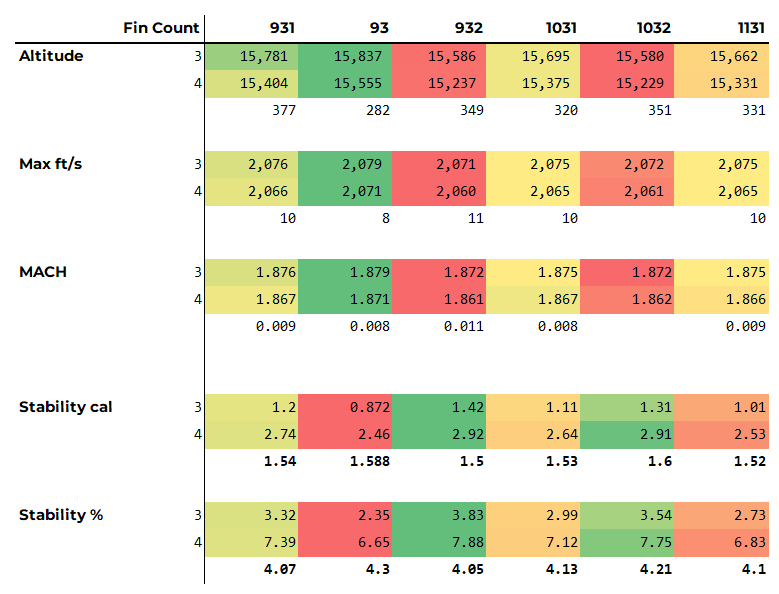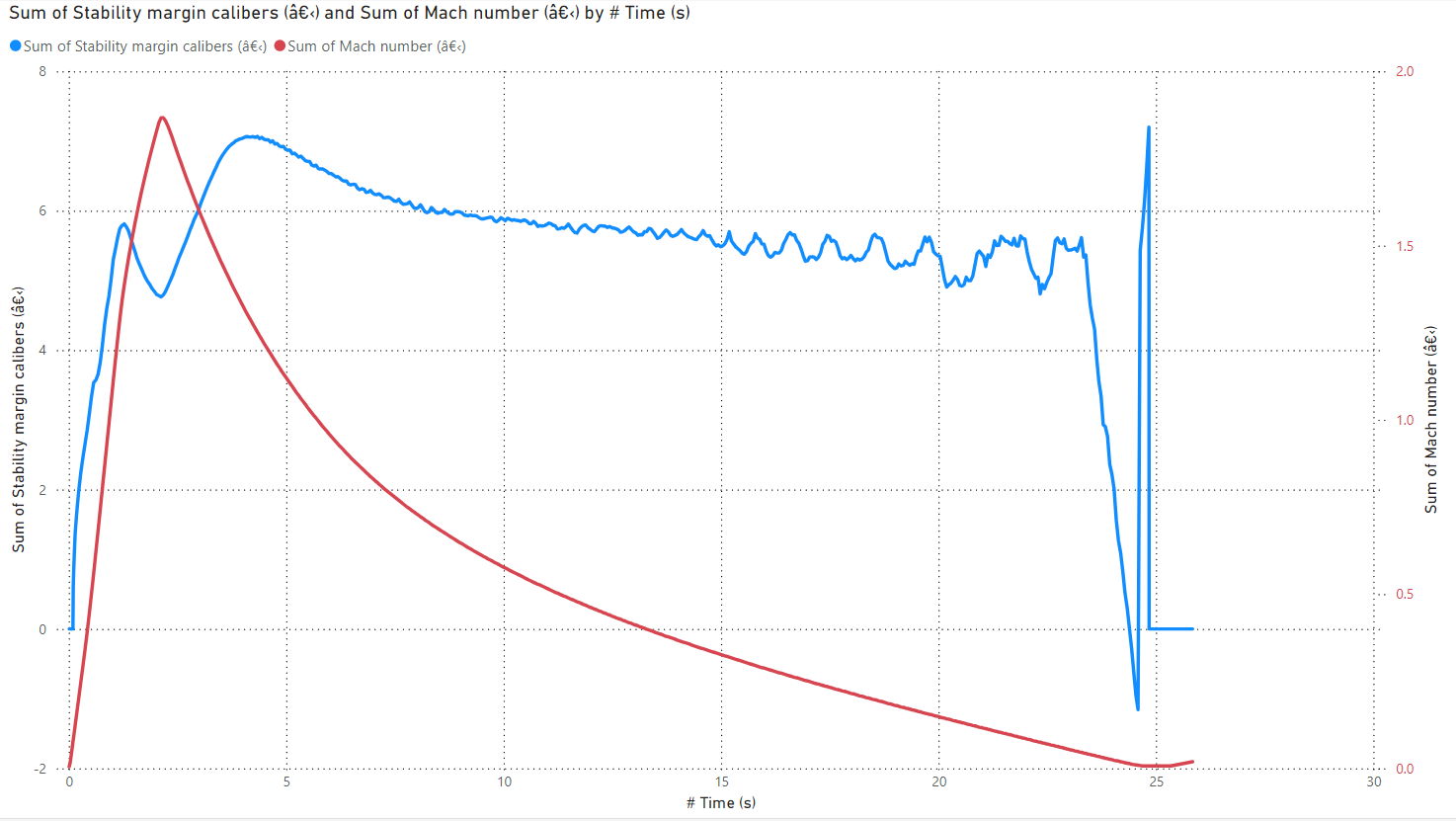The fin design of choice is a clipped delta.
Why clipped delta?
Easy to manufacture and in the chosen Root/Simi-Span/Tip configuration does provide slight performance advantages over a Swept Tapered Delta.
Performance vs. other shapes:
For supersonic rockets, the Clipped Delta and Swept Delta profiles generate less drag than the other shapes.
Looking at sounding rocket designs the Taper Swept Delta is prevalent on a number of rockets – image example below.
The below table presents data from various Clipped Delta designs.
931 represents:
Where:
Open Rocket was used to run various simulations – keeping everything in the rocket the the same and only modifying the fin configurations – ratios as well as count.
The 931 ratio performs the ‘best when compared to other Clipped Delta configurations – the pure Delta does perform better but the sharp tip does present manufacturing complexities and will be prone to damage during flight / landing.
Realistically the difference between the performance is negligible.
Fin Bevels
Leading and trailing edge bevels extend to the 1/4 Quarter Cord lines.
4 Fins vs. 3 Fins
Constructing a rocket with 4 fins does add more complexity – it is one more fin that must be aligned and attached and if traditional construction methods are used (such as tip-to-tip) carbon layup then the added fin and surface add significant more effort.
However – with the proposed modular forged carbon construction this becomes irrelevant.
Reducing the inter-fin area does make compression molding a bracket easier.
The additional bracket will add additional clamping force.


Fin Flutter calculations were done on this 931 Clipped Delta configuration using the Martin Method and the Fin Flutter Calculator that can be found here:
https://github.com/jkb-git/Fin-Flutter-Velocity-Calculator
The below calculations use the max acceleration and altitude values from the above table – launching from FAR in California. First calculation assumes a Tip-to-Tip construction and the second use NO Tip-to-Tip since this modular forged carbon construction is technically NOT a tip-to-tip construction and will not have the same strength characteristics.
The non-tip-to-tip calculation (assuming an average fin thickness of 0.23″ – 0.25 at the chord root and 0.125 at the tip) shows a safe margin or 29.8%
A quick analysis was one using three different Swept Delta configurations – comparing the Open Rocket performance data against the above / chosenn 931 Clipped Delta configuration – the 8.103.1 configuration present slight improvement over the 931 Clipped Delta – but not enough to adopt this design.